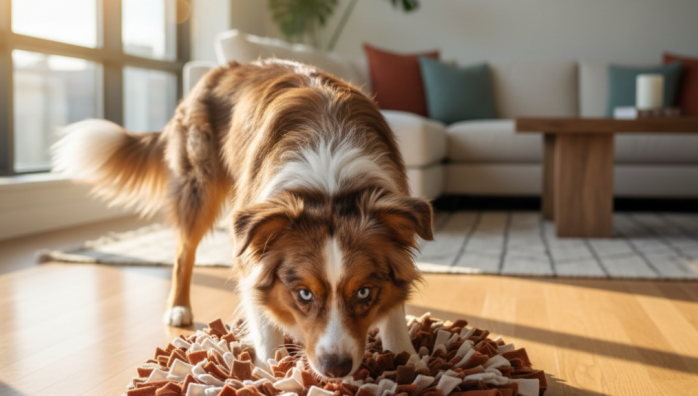Indoor Games for Energetic Apartment Dogs
by admin in Pet Care Basics 17 - Last Update November 15, 2025

When I first brought home my Aussie, Leo, I honestly thought our city apartment was a huge mistake. He had boundless energy, and our daily walks, no matter how long, just didn't seem to cut it. He'd pace, he'd whine, and I'd find my favorite cushions mysteriously de-stuffed. It was a classic case of a brilliant, high-drive dog being under-stimulated, and I felt like a total failure as a pet parent.
Why just walking isn't enough
It took me a while, and a lot of reading, to have my big 'aha' moment: for breeds like Leo, physical exercise is only half the battle. They were bred to think, to solve problems, and to work. Just tiring out their legs leaves their sharp minds screaming for a job to do. That's when I realized I needed to stop focusing on more miles and start focusing on more mental engagement. We needed to work his brain just as much as his body, and that completely changed the game for us.
My go-to games that saved our sanity
Here are a few of the simple, low-space games that I found to be incredibly effective. We still do them almost every day, especially when the weather is miserable outside.
The 'find it' game
This is scent work at its most basic, and it's Leo's absolute favorite. I started simple. I'd have him sit and stay in one room while I hid a high-value treat (just a tiny piece of dried chicken) in another. Then, I'd release him with an enthusiastic "Find it!". Watching him use his nose, totally absorbed in the task, was incredible. As he got better, I started hiding treats under rugs, behind furniture legs, and inside cardboard boxes. It's a 10-minute game that leaves him more tired than a 30-minute walk.
Brain work at mealtime
I ditched the food bowl almost immediately. Instead of letting him inhale his kibble in 15 seconds, I started using puzzle feeders and snuffle mats. These tools force him to slow down and use his brain and nose to 'forage' for his food. It turns a routine event into a rewarding challenge. Honestly, if you do one thing on this list, make it this. You can even start by just scattering kibble in a cardboard box with some crumpled paper.
Hide and seek
This game is fantastic for strengthening our bond and practicing recall. It's exactly what it sounds like. I'll have him stay while I go hide somewhere in the apartment – behind a door, in the shower, or under a blanket. Then I'll call his name. The sheer joy on his face when he finds me is priceless. It's a simple way to practice a vital command while having fun together.
A quick word on safety
Remember that even indoor play can have risks. I always make sure to play on a rug or carpeted surface to prevent slips and slides on our hardwood floors. I also move any fragile items or things he could knock over. The goal is fun, not an emergency vet visit. And as with any new activity, it's a good idea to chat with your vet to make sure the games are appropriate for your dog's age and health.










